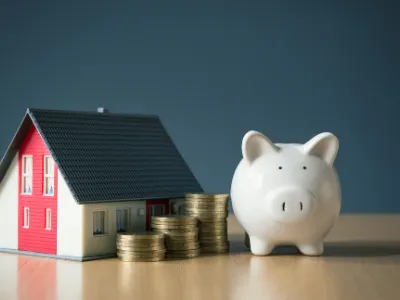Could financing through your utility bill help people make home energy efficiency improvements?

Published June 5, 2020
At a May 15 meeting, the Minnesota Public Utilities Commission (PUC) heard from representatives from the University of Minnesota and others exploring whether a new form of financing could help Minnesotans make energy efficiency improvements and reduce their home energy bills.
The option is called tariffed on-bill financing (TOBF). It was the subject of a feasibility study conducted for the University of Minnesota that examined opportunities for TOBF to cost-effectively address unmet efficiency needs in the state. CUB participated in the advisory committee for the study, and I shared CUB’s perspective on TOBF at the recent PUC meeting.
Unlike a typical loan, energy improvements using tariffed on-bill financing are paid off via a utility “tariff,” an extra line item on a customer’s utility bill. The tariff stays with the utility bill. If the customer moves, it is taken up by the next resident until the cost of the improvement is paid for. The tariff is designed to cost less than the energy savings that result from the energy efficiency improvement. For example, a customer might add insulation to their home and pay an extra $50 per month on their utility bill but save an average of $60 per month. Their bill would then be $10 less per month than before thanks to the improved energy efficiency of their home.
Tariffed on-bill financing seeks to help eliminate financial barriers to energy efficiency improvements. Some households struggle to come up with funds to pay for an improvement and do not qualify for a traditional loan. A TOBF option can reduce or eliminate the upfront costs. These programs exist in a handful of places around the country, but the suitability of such a program can vary across states due to energy costs, usage patterns, existing energy efficiency programs, and other factors.
After evaluating TOBF and a model tariff that includes significant consumer protections, CUB believes that it has the potential to help Minnesotans address specific types of energy improvements. It won’t be a good fit for everyone or for every energy efficiency measure, but it could be a helpful tool in specific circumstances. We think that a tariffed on-bill financing program would be worth exploring in a pilot in order to test out its effectiveness in Minnesota.
One of the biggest questions that CUB has, and that we would want to see tested in a pilot, is whether TOBF would be used for enough energy efficiency measures to warrant the costs of administering such a program. The study conducted for the University of Minnesota indicates that TOBF could be appropriate for certain upgrades, such as insulation and air sealing, for certain types of customers, which is encouraging.
Some people have raised important concerns with potential risks to participants in TOBF programs. First and foremost, the promised bill savings must materialize, and TOBF must not entangle people in extra expenses. Under the model tariff, charges cannot last longer than 80% of the expected lifetime of the upgrade, and the utility is required to ensure that the upgrade remains in working order for as long as the customer is paying charges on it. This ensures that the improvement will be paid off before equipment needs to be replaced again. The model tariff also prohibits charges from exceeding 80% of the estimated annual savings for a customer, and the charges can’t last any longer than 80% of the expected lifetime of the upgrade. It’s probably not possible to guarantee that someone’s bill will go down – there’s nothing stopping someone, for example, from installing a more efficient furnace then cranking the thermostat up to 80 degrees in January – but this standard leaves a good amount of wiggle room for things outside the customer’s control. It might also be possible to include bill protections for participants in a pilot program until we are able to see from local evidence if TOBF truly helps Minnesotans lower their bills.
A TOBF program should also ensure that people are not referred to this financing if they are able to get lower-cost or free energy upgrades through low-income utility conservation programs, weatherization, financing from the Minnesota Housing Finance Agency, or another option. That said, people who qualify for such programs are often not able to access them because the need far outstrips the programs’ funding. If TOBF financing can help people make needed, money-saving improvements to their homes without unreasonable risks, that would be a good thing.
Another potential concern for consumers is whether the tariff will make it more difficult to rent or sell a property or could unfairly transfer costs to the next resident. That TOBF stays with the property rather than the customer is both a selling point for many advocates and a concern for some consumer protection specialists. The tariff must be disclosed to anyone considering purchasing or renting the property. With the protections described above, we expect that the tariff will make a home’s energy bills lower than they would have been without it, not to mention the increased comfort and health improvements that energy upgrades can bring. However, it’s possible that properties with TOBF charges on their energy bills might be less attractive to potential buyers or tenants or subject future residents to risks that we are not anticipating at this time. This is a special concern if residents – especially people looking for hard-to-find affordable rentals – have few choices in a tight housing market. It will be an important issue to watch in a pilot program.
Tariffed on-bill financing could be one more tool to help people cut their energy spending and improve their homes. It won’t be a silver bullet, but it could improve energy efficiency in Minnesota.